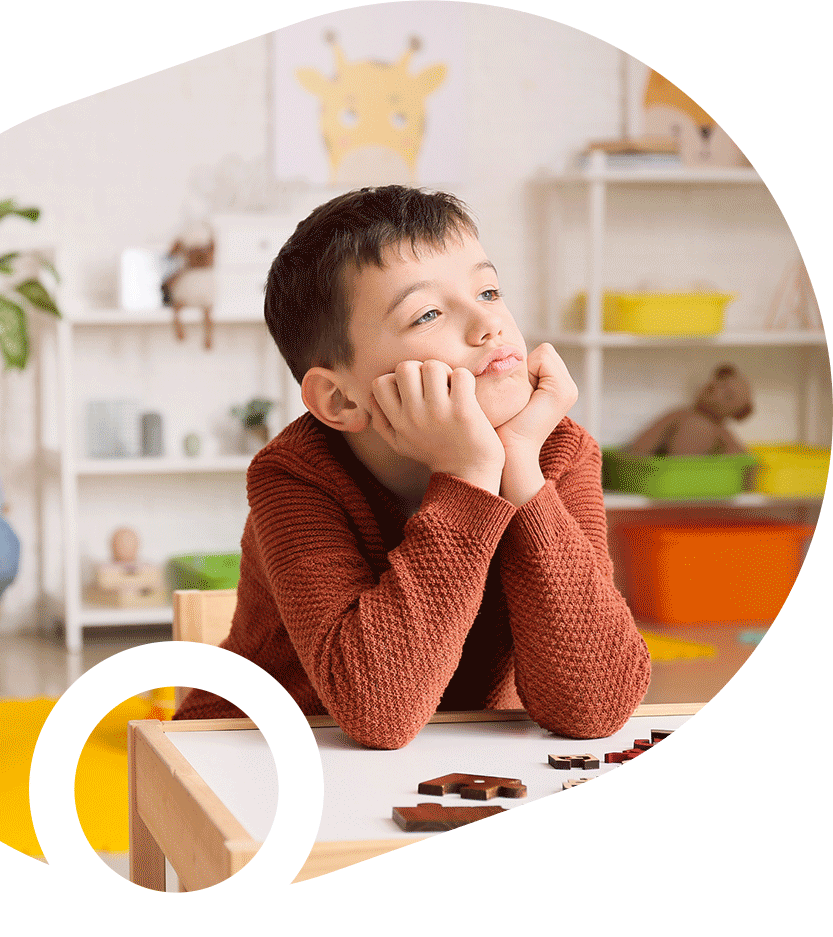

Childhood Apraxia of Speech?
Childhood Apraxia of Speech?
Speech Without Sound: What Is CAS?
Childhood Apraxia of Speech is a neurological motor planning disorder. Children with CAS know what they want to say, but their brains have difficulty coordinating the muscle movements needed to produce clear speech.

Common Signs of Apraxia May Include:
- Limited or absent babbling during infancy
- Inconsistent speech errors (the same word sounds different each time it's spoken)
- Difficulty stringing sounds and syllables together in the correct order
- Groping movements of the mouth while trying to speak
- Better understanding of language than ability to speak
How Speech Therapy Can Help:
- Children with apraxia require specialized therapy that is frequent, intensive, and tailored heir unique needs.
- Individualized Therapy Plans targeting each child's specific speech goals and using oral placement therapy
- Multisensory Techniques to strengthen brain-speech connections
- Frequent Practice Opportunities in fun and motivating ways
- Family Education and Involvement to support consistent progress at home
What is OPT?
Oral Placement Therapy (OPT) provides that vital tactile and proprioceptive feedback, helping children:
✅ Increase awareness of their oral structures
✅ Build strength, stability, and coordination of mouth muscles
✅ Achieve more accurate and consistent speech production
✅ Transition from isolated movements to connected speech patterns
In short: apraxia of speech affects motor planning →
✅ OPT teaches motor movement through touch and feel →Together, they help build clear, confident speech

What Research Says
- A 2011 survey conducted by the American Speech-Language-Hearing Association (ASHA) found that over 80% of speech-language pathologists working with CAS incorporate multisensory and tactile-kinesthetic methods like OPT alongside traditional speech therapy.
- Studies show that children with severe motor speech disorders demonstrate greater improvements when tactile feedback is combined with auditory and visual cues (Murray et al., 2015).
- Early intervention using tactile cueing strategies significantly increases the speed and clarity of speech acquisition in children diagnosed with CAS (Strand et al., 2006).
Advice for Parents and Caregivers
Supporting a child with Childhood Apraxia of Speech requires patience, persistence, and positivity. Here’s our advice for parents:
Frequently Asked Questions (FAQ)
About Childhood Apraxia of Speech (CAS)
While both affect speech development, Childhood Apraxia of Speech (CAS) is a motor planning disorder — the child knows what they want to say, but their brain struggles to coordinate the movements needed for speech. A speech delay usually involves slower development but follows a typical pattern.
In most cases, the exact cause is unknown. Some cases may be linked to genetic factors, neurological conditions, or brain injury, but many children have CAS without any other known health issues.
Children do not typically "outgrow" apraxia without therapy. With consistent, specialized intervention, most children make significant improvements and can develop clear, effective speech.
A licensed speech-language pathologist (SLP) with experience in motor speech disorders will assess speech sound production, prosody (melody and rhythm of speech), and the consistency of errors to diagnose CAS. Diagnosis can sometimes take multiple sessions.
Children with CAS benefit from frequent and intensive therapy — typically multiple sessions per week. Therapy is most effective when it is consistent and focused on motor planning for speech.
Some children use alternative communication methods (like sign language, picture systems, or AAC devices) temporarily to reduce frustration and support interaction while speech skills are developing. These methods often complement verbal therapy, not replace it.
Home practice is critical. Your SLP will provide specific exercises and tips for reinforcing speech goals. Short, frequent, and fun practice sessions are best. Encouragement, patience, and celebrating efforts are essential.
Sometimes CAS occurs alongside other developmental challenges, like language delays, sensory processing issues, or motor coordination difficulties. However, many children have CAS as their primary challenge.
